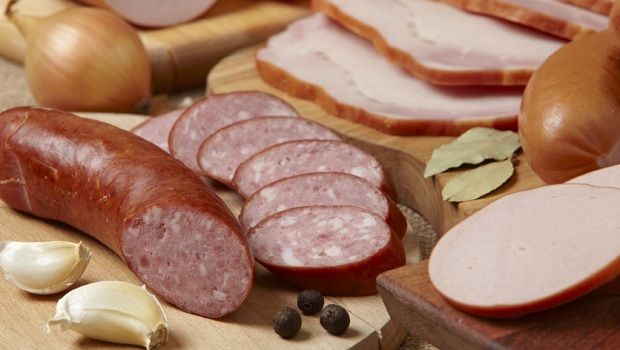Guest Blog: Natural Antioxidants as Food Preservatives
Antioxidants are a group of molecules with unique chemical structures that enable them to absorb high-energy chemicals known as free oxygen radicals. These free oxygen radicals have high reactive energy, and are unstable; therefore, they can cause a number of issues and damage in food and biological systems—including the human body.
September 14, 2015

 Editor’s Note: The following guest blog is written by Jin Ji, Ph.D., Brunswick Labs, who will speak on “Natural Antioxidants as Food Preservatives" as part of the Food Product Design track in the SupplySide West Education Program. Her session will take place on Tuesday, Oct. 6, from 1 to 1:50 p.m. at Mandalay Bay in Las Vegas. Visit http://west.supplysideshow.com/edu-more.aspx for more information and to get registered.
Editor’s Note: The following guest blog is written by Jin Ji, Ph.D., Brunswick Labs, who will speak on “Natural Antioxidants as Food Preservatives" as part of the Food Product Design track in the SupplySide West Education Program. Her session will take place on Tuesday, Oct. 6, from 1 to 1:50 p.m. at Mandalay Bay in Las Vegas. Visit http://west.supplysideshow.com/edu-more.aspx for more information and to get registered.
Antioxidants are a group of molecules with unique chemical structures that enable them to absorb high-energy chemicals known as free oxygen radicals. These free oxygen radicals have high reactive energy, and are unstable; therefore, they can cause a number of issues and damage in food and biological systems—including the human body. Because of their ability to absorb unstable free radicals, antioxidants have a long history of use in several important industries where free radicals cause issues.
In the late 19th and early 20th century, extensive research concentrated on the use of antioxidants in industrial processes, such as the prevention of metal corrosion, the vulcanization of rubber and fuel polymerization. In the food industry, the focus was on utilization of antioxidants in prevention of lipid peroxidation and rancidity. In the late 1980s and 1990s, new research emerged on the potential protective role of antioxidants in damage to biological macromolecules (nucleic acids and proteins) and cells as a result of aging and disease processes. Simple solutions such as supplementation with antioxidant vitamins were suggested to battle various pathological conditions. These solutions were simple and straightforward, but were not supported by clinical results. At this early stage when antioxidants were just discovered, they were viewed to have high potential in health application and maybe as preventive medicine. But they have a great application in the food industry for food preservation and added nutritional value.
Antioxidant for Food Preservation
One of the major challenges in food preservation is oxidation, which is initiated by free radicals; antioxidants’ capability to absorb free radicals has been found an effective solution for preventing food oxidation.
Unbeknownst to many people, America has a long history of using natural ingredients for food preservatives. The Native Americans made use of natural antioxidant ingredients for food preservation long before the modern food industry decided to explore this idea. They shredded red meat and mixed it with berries, creating a food called “Pemmican," which is still available in the modern food market. The antioxidants from berries were so effective in preventing the meat from going rancid that the Native Americans could carry the dried mixture in a sack for months without the food going bad.
In the 1920s, antioxidants were developed intentionally for use in food preservation, with a large boom in the industry in the 1940s and 1950s. In the recent years, a turn in consumer preference took place toward natural antioxidant ingredients and clean labels, which is due to skepticism about the effects of synthetic food additives on health. This trend is still strong among consumers.
Meat and poultry products have been increasingly incorporating preservative ingredients because they significantly improve shelf life, aroma, taste and other aspects of these products. Compared with conventional synthetic preservatives, natural preservatives such as spices and seasoning are gaining more acceptance from consumers as these ingredients project an image of being natural, socially responsible and clean label.
Synthetic vs. Natural Preservatives
Both synthetic and natural preservatives face a number of considerations for their practical usage. First, the considerations focus on the natural availability, extraction efficiency and purification, economical and practical factors (quantity needed, harvesting, etc.) of the natural spice and seasonings as preservatives. The second group of consideration factors involves the incorporation of a preservative, natural or synthetic, into the final food product; effect of the incorporation on the stability, solubility and the sensory properties of the food, and the interactions of the preservatives with other food ingredients. Further, there are important regulatory considerations to be considered, such as generally recognized as safe (GRAS) status, the limit of the amount that can be incorporated, etc. Often, natural and synthetic preservatives are regulated under different categories and guidelines that impact their practical use in production development.
Added Nutritional Value
In addition to the typical preservative benefits such as improved shelf lifetime and aroma that spices and seasonings preservatives may contribute, the nutritional benefits provided by the antioxidant and anti-microbial spices/seasonings themselves can be added benefits. For example, rosemary and sage are active antioxidant extracts that not only have preservative function, but also offer nutritional benefits from their antioxidant properties. With more clinical evidence showing the protective effects of dietary patterns including an abundance of antioxidant-containing plant food—such as the Mediterranean diet showing benefits in cardiovascular health and metabolic syndrome prevention—the usage of these antioxidant-rich natural spices and seasonings in food preservation remains a current trend.
Future of Food and Nutritional Products: Science-backed Products
The market for natural antioxidants comprised of spices and seasonings is strong and sophisticated. The driving force for this natural antioxidant preservative market are educated consumers focusing on healthy products and clean, familiar labels. Because this market has a high percentage of educated, savvy consumers, science-backed products will have better traction gaining consumers’ attention and support. Consumers are getting more accustomed to making fact-based judgments, and they are likely to focus on healthy products with convincing evidence. Clinical studies and preclinical studies are in high demand by both consumers and product developers to demonstrate and prove the health effects of food products. That is where scientific testing and research laboratories can help provide support to enable successful, new-age products. Sophisticated phytonutrient profiling, clinical studies and pre-clinical studies performed by a reputable laboratory can provide solid scientific support of the nutrition values, biological functionality, and health benefits of novel food and nutritional products. The science behind these novel food and nutritional products wins the market.
Jin Ji, Ph.D., is a creative technology business leader focusing on identification and development of advanced technologies in nutraceutical and biomedical industries. At Brunswick Labs (Brunswicklabs.com), Ji leads operation, marketing and technology development. Ji combines her biomedical research experience with in-depth food/nutrition investigation knowledge of Brunswick Labs to further the investigation at Brunswick Labs onto a more sophisticated, clinical and preclinical studies backed stage.
You May Also Like




.png?width=800&auto=webp&quality=80&disable=upscale)